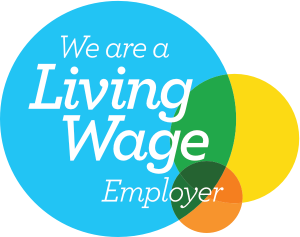Abuse, harassment, bullying and exploitation appal me and every other civil society leader who goes to work every day with the intention of making the world better.
The people that engage in this behaviour are so far removed from the inspiring, generous, caring individuals that I meet on a daily basis, and who make up the majority of the charity sector, that it’s tempting to respond to reports of abuse not by focusing on the poor behaviour of the minority but on the brilliant work of the majority.
However, it is our responsibility as leaders not to shy away from the fact that there are those in our number who misuse their power, and who should not be allowed the privilege of working within or leading a charity. If we do not, then we risk unintentionally providing those who abuse or misuse their power with additional cover, a veneer of assumed respectability gleaned from their association with charity.
I don’t believe there is such a thing as a perfect leader. Leaders are human and like all humans we make mistakes. Most of these mistakes will be minor and most won’t harm others in the way we have seen reported. But projecting an idea of leaders as infallible risks creating a culture where relatively minor breaches of standards aren’t questioned and over time grow into more harmful behaviour.
Twenty years ago the characteristics most readily ascribed to a good leader would be things like strong, charismatic, authoritative. Discussions about leadership are littered with false dichotomies: a born leader or a born follower; a hero or a loser; strong or weak. This is all underpinned with deeply gendered and hierarchical ideas of what it means to be a leader. This model of leadership, a focus on the individual and their perceived strength, is not going to create a safe workplace culture. To do this we need leaders who live by their values.
In ACEVO’s report released today, Leading with values: creating a safe organisational culture, we discuss how charity leaders can lead with values to create a safe workplace culture. Value-based or moral leadership has three key pillars:
1. Being values-led
Values must be authentic, relevant to the work of the charity and resonate with the staff team. Once values have been set, they have to be lived. This means that they have to be clearly articulated, communicated internally and actively demonstrated in the conduct of all those working in a charity. Values should be the golden thread that runs through all decision-making in the charity.
2. Modelling ethical behaviour
Culture is modelled from the top and created through action. It is not enough to do a piece of work on values, put the values into policies and procedures and communicate them to staff, but then act in a way which counters those policies and values. How a leader chooses to use their time and distribute resources is noticed by the team, and team members will set their own priorities in response.
3. Nurturing a culture of continuous improvement
Leaders should encourage open, honest, constructive conversations about areas of disagreement which will enable each staff member to feel that their voice is valued and listened to. This will create a culture in which staff and volunteers are not afraid to challenge the status quo.
In order to enable and facilitate this kind of moral leadership and to reduce the risk of future harmful behaviour occurring, there needs to be an open conversation about the processes, behaviours and attitudes that are embedded in society and contribute to inequality. This includes acknowledging the fact that the majority of the reports of misconduct and abuse that have emerged over the last six months involve a female victim and a male perpetrator.
This is not a problem unique to charity, this is a societal problem caused by gender inequality. Charities should be held to a higher account because they are values-led, but they are part of society, not removed from it. This means that at times there will be inequality, and gender-based abuse within charities. Charity leaders also need to identify where power imbalances exist in their own organisations. They should consider to how power can be more evenly distributed, and how to mitigate the risk of misuse of power.
Of course, the environment in which we’re operating doesn’t help. Factors such as public perception of how charitable funds should be spent, small training budgets, transparency being interpreted as poor practice, and an overreliance on DBS checks can create a context that feels at odds with good leadership practice. When this happens ACEVO will speak out and use the power of our network so our members know they are not alone.
Good leadership is selfless; it is about collaboration, generosity, transformation and empowerment. Good leaders are highly skilled but they recognise the value of the team and most importantly of the people they serve; they seek to work collectively and mobilise others. These are the characteristics that create leaders, not figureheads, and it is leaders that will make our workplaces safer.


